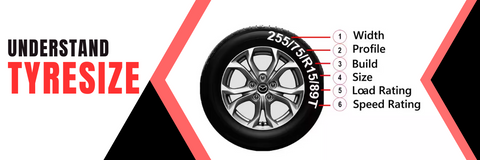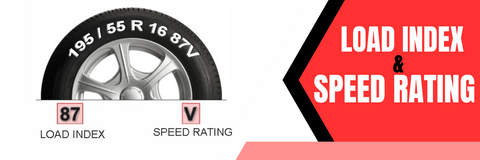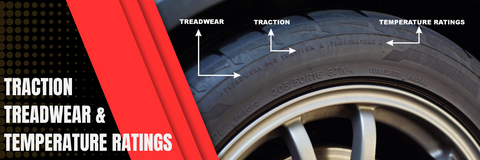Understanding Tire Ratings: What Do the Numbers Mean?
Posted by Hunt Parts on
INTRODUCTION
When it comes to maintaining the performance and safety of your car, one critical component to consider is your tires. Tires affect how your automobile handles on the road, its fuel efficiency, and overall safety. Understanding tire ratings, particularly those found on the sidewall of your tires, is critical for making informed selections about your tires. This blog post will help you choose the correct tires for your car by demystifying these numbers and letters.
TIRE SIZE

The first set of digits on the sidewall of your tire represents the tire size. It is usually written in the following format: P215/65R15. Let's understand what these numbers mean:
- P: This letter denotes the type of tire. The letter "P" denotes passenger vehicle tires, which are typically found on vehicles and SUVs. You may also see the letters "LT" for light truck tires and "ST" for special trailer tires.
- 215: The width of the tire in millimeters is represented by this three-digit value. The tire in this example is 215 millimeters wide.
- 65: The two-digit number after the slash represents the aspect ratio, which is the height-to-width ratio of the tire. In this situation, the height is 65% of the width of the tire.
- R: The letter "R" denotes radial construction, which is the most popular style of tire construction today.
- 15: The final digit denotes the wheel's diameter in inches. As a result, this tire is intended to suit a 15-inch wheel.
LOAD INDEX AND SPEED RATING

You'll see two numbers and a letter after the tire size. These are the load index and speed rating, which are important for measuring the weight-carrying capacity and speed capabilities of a tire.
- Load Index (for example, 91): The load index reflects the tire's maximum load-carrying capacity. The greater the number, the greater the weight that the tire can support. To get the particular weight capacity for each number, see a load index chart.
- Speed Rating (for example, H): The speed rating denotes the highest speed that the tire can safely handle. Each letter represents a different speed range. For example, "H" denotes a tire capable of reaching speeds of up to 130 mph. Make sure the speed rating corresponds to the capabilities of your car.
TREADWEAR, TRACTION & TEMPERATURE RATINGS

There are three extra ratings in the form of letters on the sidewall:
- Treadwear Rating (e.g., 500): This figure estimates the tire's lifetime. A greater treadwear grade indicates a tire that will last longer.
- Traction Rating (for example, A): The traction rating of a tire indicates its ability to hold the road during braking and cornering. It is evaluated on a scale of "C" (poor) to "AA" (excellent).
- Temperature Rating (for example, A): The temperature rating assesses the tire's capacity to dissipate heat while maintaining structural integrity at high speeds. Ratings range from "C" (lowest) to "A" (highest).
CONCLUSION
Understanding these ratings might help you make an informed selection when replacing your vehicle's tires. Remember to choose tires that are appropriate for your driving patterns, the sort of roads you normally travel on, and the weather conditions in your area.
We provide a large range of tires at Hunt Parts, your trusted auto parts store in Canada, and our professional staff can guide you in locating the perfect tires for your car depending on its specs and your driving demands. We are dedicated to assisting you in preserving the safety and performance of your car, one tire at a time.
